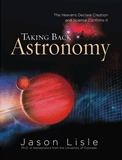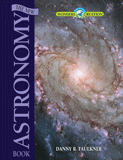Kids Feedback: Traveling to Jupiter
NASA/JPL-Caltech/SwRI/MSSS/Kevin M. Gill, Public domain, via Wikimedia Commons
My 10 yr old son and I are studying astronomy this year. He had two questions yesterday which I can not answer for him.
- To travel to Jupiter, why do we have to pass thru the asteroid belt? Why can’t we just go up and over it?
- It looks like the planets all orbit the sun with linear orbits. Why don’t they look more like electrons orbiting its nucleus?
Thank you for any explanation to these.
—S.D., Michigan
Response from Dr. Jason Lisle:
Answer to Question 1: That is a very good thought. The answer is that we could indeed go up and over the asteroid belt to get to Jupiter. However, that would take a lot more energy than simply going straight through the belt. So scientists prefer to go straight through the belt to save fuel (which is expensive). But it’s not a problem. Asteroids are very far apart from each other, contrary to the way they are sometimes illustrated in books. So there is virtually no chance that a spaceship would accidentally run into one.
Answer to Question 2: Sometimes electrons are drawn as little spheres orbiting the nucleus. But really, the situation is more complicated and strange than this. When we study things that are very small, like electrons, we find that they behave in a way that is very strange compared to the much larger objects that we normally deal with. Electrons act sort of like a wave (extended in space) sometimes. The rules they obey are part of a field of physics called “quantum mechanics,” which is somewhat different than the physics we use to compute the motion of larger objects like cars, or even planets. So that is one reason why electrons “orbit” differently than planets.
Second, electrons have an electric charge and so they repel each other, which strongly affects their motion. However, planets only very weakly affect each other, because their gravity is very weak compared to the sun. So this is another reason why the solar system looks quite different than an atom.
If you would like to learn more, please view the following:
Parents, if your children have any questions, please submit them using the “contact us” section on our main website.
Recommended Resources
- © 2025 Answers in Genesis
- Privacy Policy
- Contact
- About




